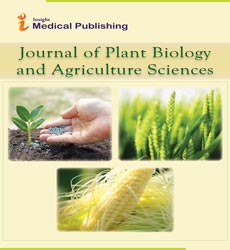The molecular mechanism behind the primed seed of cotton (Gossypium hirsutum L.)-Plant Genomics Webinar
Abstract
The molecular mechanisms behind the seed priming are still a mystery. However, advanced molecular tools such as genomics, transcriptomics, and proteomics have added significant information. Seed priming is a seed pre-soaking technique that is used to initiate pre-germination processes inside by activating the expression of certain genes. This study was designed to reveal important molecular mechanisms behind cotton seed priming. Seed priming completes into three phases: I. Imbibition phase, II. Lag phase, and III. Radicle emergence phase. Proteomic analysis revealed that GhAKT1 (K+ channel gene) was activated and expressed during phase I of primed seeds and facilitated the transport of K+ and elongation of embryonic cells in primed seeds. The repair and synthesis of new mitochondria were also observed in primed seeds by the resumption of respiratory activities. However, expression of ACT7 (Actin-gene) was also observed in primed seeds. In Phase II, more RNA transcripts were found than unprimed seeds. Several events were revealed, including the mitochondrial repair, synthesis of new mitochondria, and proteins. The embryonic expansion also began due to the expression of the GhAKT1 gene. The proteomic analysis also revealed the synthesis of α-amylase, β-amylase, protease, and isocitrate lyase in primed seeds which are required for degradation and translocation of reserve food. The end of Phase II and the start of Phase III are marked by radicle protrusion through the testa/seed coat. During the third phase, there was a significant increase of actin proteins found in primed seeds which characterized cell division. Radicle cells elongation was also noted by following the activity of ACT7, and GhAKT1 genes.
Open Access Journals
- Aquaculture & Veterinary Science
- Chemistry & Chemical Sciences
- Clinical Sciences
- Engineering
- General Science
- Genetics & Molecular Biology
- Health Care & Nursing
- Immunology & Microbiology
- Materials Science
- Mathematics & Physics
- Medical Sciences
- Neurology & Psychiatry
- Oncology & Cancer Science
- Pharmaceutical Sciences
